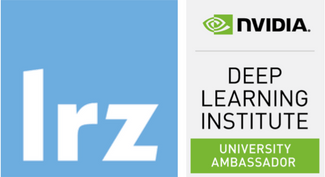Building Transformer-Based Natural Language Processing Applications
Description
Applications for natural language processing (NLP) have exploded in the past decade. With the proliferation of AI assistants and organizations infusing their businesses with more interactive human-machine experiences, understanding how NLP techniques can be used to manipulate, analyse, and generate text-based data is essential. Modern techniques can capture the nuance, context, and sophistication of language, just as humans do. And when designed correctly, developers can use these techniques to build powerful NLP applications that provide natural and seamless human-computer interactions within chatbots, AI voice agents, and more.Deep learning models have gained widespread popularity for NLP because of their ability to accurately generalize over a range of contexts and languages. Transformer-based models, such as Bidirectional Encoder Representations from Transformers (BERT), have revolutionized NLP by offering accuracy comparable to human baselines on benchmarks like SQuAD for question-answer, entity recognition, intent recognition, sentiment analysis, and more.
In this course, you’ll learn how to use Transformer-based natural language processing models for text classification tasks, such as categorizing documents. You’ll also learn how to leverage Transformer-based models for named-entity recognition (NER) tasks and how to analyse various model features, constraints, and characteristics to determine which model is best suited for a particular use case based on metrics, domain specificity, and available resources.
The course is co-organised by LRZ and NVIDIA Deep Learning Institute (DLI). NVIDIA DLI offers hands-on training for developers, data scientists, and researchers looking to solve challenging problems with deep learning.
Learning Objectives
By participating in this course, you’ll be able to:
- Understand how text embeddings have rapidly evolved in NLP tasks such as Word2Vec, recurrent neural network (RNN)-based embeddings, and Transformers,
- See how Transformer architecture features, especially self-attention, are used to create language models without RNNs,
- Use self-supervision to improve the Transformer architecture in BERT, Megatron, and other variants for superior NLP results,
- Leverage pre-trained, modern NLP models to solve multiple tasks such as text classification, NER, and question answering,
- Manage inference challenges and deploy refined models for live applications.
Agenda
10:00 - 10:20 Welcome and presentation
10:00 - 12:00 Part 1. Machine Learning and Natural Language Processing
12:00 - 13:00 Lunch break
13:00 - 14:45 Part 2. Transformer based models for Natural Language Processing
14:45 - 15:00 Coffee break
15:00 - 16:00 Part 3. The afterparty: Transformer based models in Production
Material
Survey
Please fill out the online survey under https://tinyurl.com/survey-nlp
This helps us to
- increase the quality of the courses,
- design the future training programme at LRZ according to your needs and wishes,
- get future funding for training events.
Contact
PD. Dr. Juan J. Durillo (durillo@lrz.de)
NVIDIA Deep Learning Institute
The NVIDIA Deep Learning Institute delivers hands-on training for developers, data scientists, and engineers. The program is designed to help you get started with training, optimizing, and deploying neural networks to solve real-world problems across diverse industries such as self-driving cars, healthcare, online services, and robotics.
TRAINING SETUP
To get started, follow these steps:
- Create an NVIDIA Developer account at http://courses.nvidia.com/join Select "Log in with my NVIDIA Account" and then '"Create Account".
- Make sure that WebSockets works for you:
- Test your Laptop at http://websocketstest.com
- Under ENVIRONMENT, confirm that '"WebSockets" is checked yes.
- Under WEBSOCKETS (PORT 80]. confirm that "Data Receive", "Send", and "Echo Test" are checked yes.
- lf there are issues with WebSockets, try updating your browser.
We recommend Chrome, Firefox, or Safari for an optimal performance. - Visit http://courses.nvidia.com/dli-event and enter the event code provided by the instructor.
- You're ready to get started. Please complete the survey at the end of the course to share your feedback.
NEXT STEPS
Visit the NVIDIA Deep Learning lnstitute's website at http://www.nvidia.co.uk/dli to access more training and resources.
- Start online, self-paced training in deep learning and accelerated computing (using the account you created today).
- View upcoming workshops around the world and request an onsite workshop at your company or organization.
- Learn about the University Ambassador Program.
Ready to kick off a deep learning project or already working on one? Choose the best software and hardware solutions at
http://www.nvidia.co.uk/deep-learning-ai/developer/





